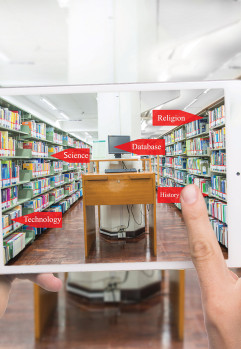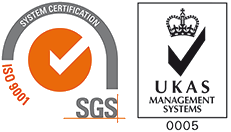The Roles of Digital Libraries in Teaching and Learning
Libraries have long served crucial roles in learning. The first great library, in Alexandria two thousand years ago was really the first university. It consisted of a zoo and various cultural artifacts in addition to much of the ancient world’s written knowledge and attracted scholars from around the Mediterranean who lived and worked in a scholarly community for years at a time. Today, the rhetoric associated with the National/Global Information Infrastructure (N/GII) always includes examples of how the vast quantities of information that global networks provide (i.e., digital libraries) will be used in educational settings.
This paper describes how digital libraries are evolving to meet the needs of teaching and learning and identifies issues for continued
development. We distinguish formal, informal, and professional learning and argue that digital libraries will allow teachers and students to use information resources and tools that have traditionally been physically and conceptually inaccessible. We illustrate the types of
information resources that digital libraries offer to teachers and learners and discuss some of the issues and challenges that digital libraries
present for teaching and learning.
How do libraries support teaching and learning?
A library is fundamentally an organized set of resources, which include human services a s well as the entire spectrum of media (e.g., text, video, hypermedia). Libraries have physical components such as space, equipment, and storage media; intellectual components such as collection policies that determine what materials will be included and organizational schemes that determine how the collection is accessed; and people who manage the physical and intellectual components and interact with users to solve information problems.
Libraries serve at least three roles in learning. First, they serve a practical role in sharing expensive resources. Physical resources such as
books and periodicals, films and videos, software and electronic databases, and specialized tools such as projectors, graphics equipment and
cameras are shared by a community of users. Human resources--librarians (also called media specialists or information specialists) support
instructional programs by responding to the requests of teachers and students (responsive service) and by initiating activities for teachers and students (proactive services). Responsive services include maintaining reserve materials, answering reference questions, providing
bibliographic instruction, developing media packages, recommending books or films, and teaching users how to use materials. Proactive
services include selective dissemination of information to faculty and students, initiating thematic events, collaborating with instructors
to plan instruction, and introducing new instructional methods and tools. In these ways, libraries serve to allow instructors and students to share expensive materials and expertise.
One clear difference between traditional libraries and digital libraries is that
digital libraries offer greater opportunity for users to deposit information as well as use information.
The most important changes that digital libraries bring may be in advancing informal learning.
Second, libraries serve a cultural role in preserving and organizing artifacts and ideas. Great works of literature, art, and science must be preserved and made accessible to future learners. Although libraries have traditionally been viewed as facilities for printed artifacts, primary and secondary school libraries often also serve as museums and laboratories. Libraries preserve objects through careful storage procedures, policies of borrowing and use, and repair and maintenance as needed. In addition to preservation, libraries ensure access to materials through indexes, catalogs, and other finding aids that allow learners to locate items appropriate to their needs.
Third, libraries serve social and intellectual roles in bringing together people and ideas. This is distinct from the practical role of sharing resources in that libraries provide a physical place for teachers and learners to meet outside the structure of the classroom, thus allowing people with different perspectives to interact in a knowledge space that is both larger and more general than that shared by any single discipline
or affinity group. Browsing a catalog in a library provides a global view for people engaged in specialized study and offers opportunities for
serendipitous insights or alternative views. In many respects, libraries serve as centers of
interdisciplinarity--places shared by learners from all disciplines. Digital libraries extend such interdisciplinarity by making diverse information resources available beyond the physical space shared by groups of learners. One of the greatest benefits of digital libraries is bringing together people with formal, informal, and professional learning missions.
New Opportunities
Formal learning is systematic and guided by instruction. Formal learning takes place in courses offered at schools of various kinds and in training courses or programs on the job. The important roles that libraries serve in formal learning are illustrated by their physical prominence on university campuses and the number of courses that make direct use of library services and materials. Most of the information resources in schools are tied directly to the instructional mission. Students or teachers who wish to find information outside this mission have in the past had to travel to other libraries. By making the broad range of information resources discussed below available to students and teachers in schools, digital libraries open new learning opportunities for global rather than strictly local communities.
Much learning in life is informal--opportunistic and strictly under the control of the learner. Learners take advantage of other people, mass
media, and the immediate environment during informal learning. The public library system that developed in the U.S. in the late nineteenth century has been called the “free university”, since public libraries were created to provide free access to the world’s knowledge. Public libraries provide classic nonfiction books, a wide range of periodicals, reference sources, and audio and video tapes so that patrons can learn about topics of their own choosing at their own pace and style. Just as computing technology and world-wide telecommunications networks are beginning to change what is possible in formal classrooms, they are changing how individuals pursue personal learning missions.
Professional learning refers to the on going learning adults engage in to do their work and to improve their work-related knowledge and skills. In fact, for many professionals, learning is the central aspect of their work. Like informal learning, it is mainly self-directed, but unlike formal or informal learning, it is focused on a specific field closely linked to job performance, aims to be comprehensive, and is acquired and applied longitudinally. Since professional learning affects job performance, corporations and government agencies support libraries (often called information centers) with information resources specific to the goals of the organization. The main information resources for professional learning, however, are personal collections of books, reports, and files; subscriptions to journals; and the human networks of colleagues nurtured through professional meetings and various communications. Many of the data sets and computational tools of digital libraries were originally developed to enhance professional learning.
Clear roles
The digital libraries have obvious roles to play in formal learning settings by providing teachers and learners with knowledge bases in a variety of media. In addition to expanding the format of information (e.g., multimedia, simulations), digital libraries offer more information than most individuals or schools have been able to acquire and maintain. Digital libraries are accessible in classrooms and from homes as well as in central library facilities where specialized access, display, and use tools may be shared. Remote access allows possibilities for vicarious field trips, virtual guest speakers, and access to rare and unique materials in classrooms and at home. The promise is one of better learning through broader, faster, and better information and communication services. These physical advantages promise several advantages to teachers and learners by extending the classroom, however, as with all technologies, there are costs and tradeoffs to these advantages.
One clear difference between traditional libraries and digital libraries is that digital libraries offer greater opportunity for users to deposit information as well as use information. Thus, students and teachers can easily be publishers as well as readers in digital libraries. The number of student-produced “Mosaic home pages” and gopher sites continues to grow as teachers and students not only bring digital library information into the classroom but move the products of the classroom out into the digital libraries. Just as distinctions between publishers and readers are becoming less clear in networked environments, Internet access in classrooms blurs distinctions between teaching and learning. Students bring interesting and important information to class discussions and in many cases lead teachers and classmates to new electronic resources and tools. Teachers’ increasingly will find themselves in the important roles of moderator and critic, modeling for students how to examine and compare points of view and look critically at information. Teachers who have begun using networked materials in their c lasses a re early adopters of new ideas and technologies and are comfortable sharing power with students. Just as “authority of information” has become an issue in professional communities that leverage networks, the authority of information in classrooms that has traditionally rested solely with teachers will increasingly be challenged by students locally and remotely.
Digital libraries will support communities of interest and allow more specialized courses to be offered. For example, students at different high schools in the CoVis project collaborated by sharing a digital library of weather data and students in the Earth System Science Community Project described above share a variety of NASA data in classes in Washington D.C., St. Louis, Los Angeles, and New Mexico. Telecourses have already allowed rural schools to offer advanced placement courses to a few students by sharing teachers across geographical distances. As network access improves in schools, highly specialized courses offered on a distributed basis will become common, and it is likely that some of these will be offered by students. Internet-based courses have already been offered successfully, although mainly on the topic of the Internet itself, and network based electronic conferences have proven effective.
The most challenging thing
is building intellectual infrastructures for digital libraries.
Digital libraries will allow parents, teachers, andstudents to share common
information resources and communicate easily asneeded.
Changes and challenges
The most important changes that digital libraries bring may be in advancing informal learning. The same advantages that accrue to classroom learning also accrue to individuals pursuing their own learning. In many ways, the development of Freenets are extensions of the public library system. Digital libraries are digital schools that offer formal packaging for specific skills and topics as well as general browsing for
creative discovery and self-guided, informal learning. The design community has already begun to consider ways to support learning on
demand in electronic environments to address problems of coverage (since no learning system can cover all things learners may need) and obsolescence (systems and knowledge changes).
Even more challenging, however, is building intellectual infrastructures for digital libraries. These include techniques for using electronic information in teaching and learning. Teachers must learn how to teach with multimedia resources and to share informational authority with students. Designing activities that take advantage of digital library resources requires time and effort to examine what is available and integrate information into modules and sequences appropriate to the students and curriculum. Furthermore, modeling the research process for students requires teachers to grapple with problems on-the-f ly, make mistakes, recover, react to dead ends, and demonstrate all the other uncomfortable and frustrating aspects of problem solving.
Just as teachers must learn new strategies for using electronic tools in teaching, students must learn how to learn with multimedia (both actively and passively) and how to take increased responsibility for directing their own learning. In our observations of students in classrooms where Perseus was used, students expressed concerns about taking notes--because a screen of text, a screen of vases, and the instructor’s verbal comments were concurrently available, they did not know what to write down! Although better technological tools such as networked laptop computers may solve the technical problem, the issues of what to attend to and how multiple streams of information should be integrated require new combinations of perceptual, cognitive, and physical skills for learning. In short, building intellectual infrastructures requires intellectual, emotional, and social breakthroughs for teaching and learning.
At the nexus of physical and intellectual infrastructure is the interface to the digital library. Tools for finding, managing, using, and publishing electronic information must be both powerful and easy to use. Digital libraries must provide a mix of software and people to provide reference assistance and question answering services. The people in the digital library will go beyond reference to serve as teachers on demand. These humans must be aided by software that shunt “typical” questions toward pathfinders or frequently-asked-question services. Thus, digital libraries will extend what has been the most beneficial feature of electronic networks- -communication--to teaching and learning settings. Good interfaces will allow learners to take advantage of digital resources equally well in classrooms, homes, and offices.
Clearly, digital libraries have important roles to play in teaching and learning. Existing physical schools and libraries will continue to exist since they serve cultural and social roles as well as informational roles. There will always be a need for physical objects and social settings in learning; the vicarious is not enough. Parents will continue to demand child care, assurances of organized and shared culture beyond television, and human direction and guidance in learning at all levels. These demands will also be augmented by digital environments. Digital libraries will allow parents, teachers, and students to share common information resources and communicate easily as needed. In special cases, work, school, and play may become one--novice and professional learners collaborating with common information resources to solve real problems. In many respects, digital libraries will become digital schools. This represents a return to Alexandria, where learners of all types come together to share and explore information and expertise.
Source: https://ils.unc.edu/~march/cacm95/main.html








